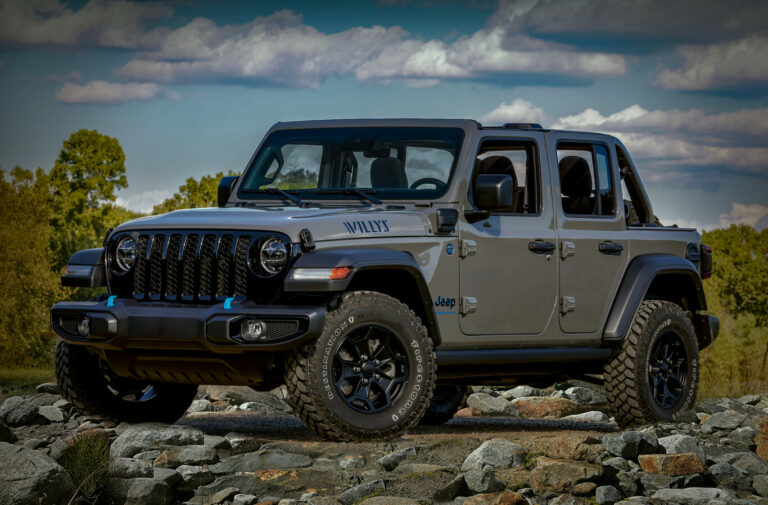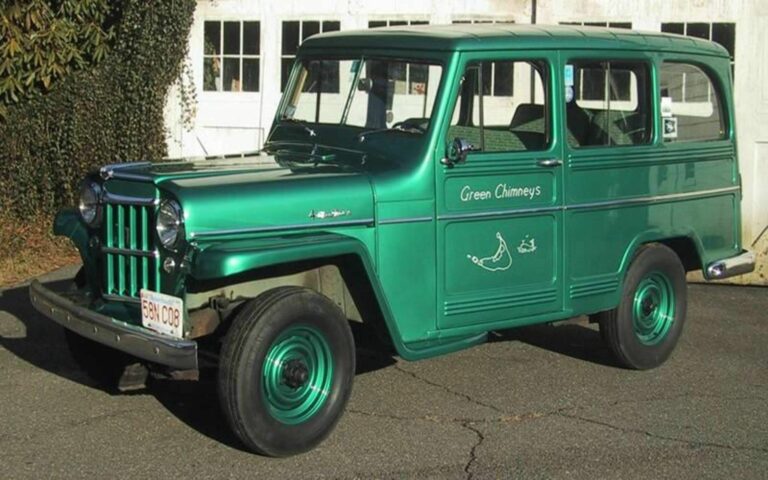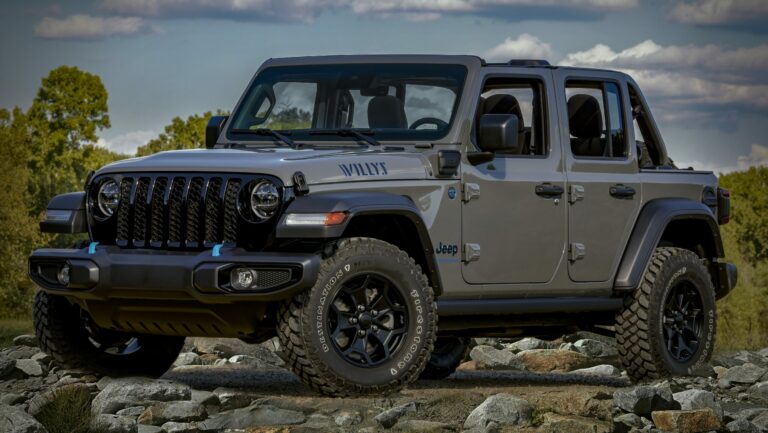258 Jeep Engine For Sale: Your Ultimate Guide to Finding and Buying This Legendary Powerplant
258 Jeep Engine For Sale: Your Ultimate Guide to Finding and Buying This Legendary Powerplant jeeps.truckstrend.com
Introduction: The Enduring Heart of Classic Jeeps
For countless Jeep enthusiasts, the mention of the "258" immediately conjures images of rugged reliability, impressive low-end torque, and a mechanical simplicity that defines an era. The AMC 258 cubic inch (4.2-liter) inline-six engine is more than just a power plant; it’s a legend. From the battle-hardened CJ series to the workhorse YJ Wranglers and even various Cherokee and Wagoneer models, the 258 was the beating heart that propelled these iconic vehicles through mud, over rocks, and across continents. Its reputation for longevity, ease of maintenance, and remarkable adaptability has ensured its continued popularity, even decades after its last production.
258 Jeep Engine For Sale: Your Ultimate Guide to Finding and Buying This Legendary Powerplant
Today, finding a 258 Jeep engine for sale is a common quest for those looking to breathe new life into a cherished classic, undertake an authentic restoration, or even perform a robust engine swap. This comprehensive guide aims to equip you with all the knowledge needed to navigate the market, identify a quality engine, and make an informed purchase, ensuring your beloved Jeep continues to conquer trails for years to come.
The Enduring Legacy of the AMC 258 I6 Engine
Born from the robust AMC inline-six family, the 258 CID (4.2L) engine was produced from 1971 to 1990. It succeeded the 232 CID engine and paved the way for the equally legendary 4.0L High Output engine. Its most prominent applications were in:
- Jeep CJ Series: CJ-5, CJ-7, CJ-8 Scrambler
- Jeep Wrangler YJ: 1987-1990 models
- Jeep Cherokee (XJ): Early models
- Jeep Wagoneer/Grand Wagoneer: Full-size models
- Jeep J-Series Pickups: J10, J20

Key Features and Why It’s So Sought After:
- Inline-Six Configuration: Inherently balanced and smooth-running, providing excellent torque delivery.
- Cast-Iron Block and Head: Over-engineered for durability, capable of withstanding significant abuse and high mileage.
- Low-End Torque: Its long stroke design delivers impressive torque at low RPMs, making it ideal for off-roading, crawling, and towing.
- Simplicity: Fewer complex electronics (especially earlier carbureted versions) mean easier diagnosis, repair, and modification for the home mechanic.
- Reliability: With proper maintenance, these engines are known to run for hundreds of thousands of miles.
- Mod-Friendly: A vast aftermarket supports performance upgrades, fuel injection conversions, and more.


The 258’s blend of raw power, unwavering reliability, and straightforward mechanics makes it a perennial favorite for anyone seeking to maintain the authentic character and capability of their vintage Jeep.
Why Buy a 258 Jeep Engine Today?
While modern engines offer efficiency and power, there are compelling reasons why enthusiasts continue to seek out the 258:
- Direct Replacement: The most common reason is to replace a worn-out or damaged original 258 in a classic Jeep. Maintaining the original engine type preserves the vehicle’s authenticity and often simplifies the swap process.
- Authentic Restoration: For purists, a period-correct 258 is essential for a true-to-original restoration project, ensuring historical accuracy and value.
- Engine Swap for Compatibility: Owners of Jeeps with less desirable engines (e.g., the AMC 150 I4 or even some V8 conversions that sacrifice low-end torque) often opt for a 258 swap due to its balanced performance and relatively easy integration.
- Building a Custom Rig: The 258’s robust nature and aftermarket support make it an excellent foundation for custom off-road builds where reliability and low-end grunt are paramount.
- Cost-Effectiveness: Compared to sourcing and adapting modern engines, or even rebuilding a different type of engine, a used or remanufactured 258 can be a cost-effective solution for getting a classic Jeep back on the road or trail.
Types of 258 Engines Available for Sale
Understanding the different categories of 258 engines available will help you set realistic expectations for cost, condition, and longevity.
-
Used/Salvaged Engines (Running Take-Outs):
- Description: These are engines pulled directly from donor vehicles, often from junkyards or Jeeps being parted out. They are sold "as is."
- Pros: Generally the most affordable option. Can sometimes be found still running, allowing for a basic assessment.
- Cons: Unknown history, mileage, and internal wear. High risk of needing significant work or even a full rebuild.
- What to Look For: Ask for a video of it running, compression test results (if available), check oil for sludge/coolant, look for external cracks or severe leaks.
-
Rebuilt Engines:
- Description: An engine that has been disassembled, inspected, cleaned, and had worn or damaged components replaced (e.g., new bearings, piston rings, gaskets, seals). The block and head are usually reconditioned.
- Pros: Much better reliability than a used engine. Typically comes with a limited warranty. Offers a good balance of cost and performance.
- Cons: Quality can vary depending on the rebuilder. More expensive than used.
- What to Ask For: Detailed list of new parts installed, machine shop work performed, rebuilder’s reputation, and specific warranty terms.
-
Remanufactured Engines:
- Description: A step above a rebuild. These engines are brought back to or exceed OEM specifications. They undergo a more rigorous process, often involving line boring, decking, and extensive testing. All wear parts are replaced, and often even non-wear parts are replaced or upgraded.
- Pros: Closest to a new engine in terms of performance and reliability. Often come with a more extensive warranty (e.g., 1-3 years).
- Cons: Most expensive option among readily available 258s.
- What to Ask For: Specific remanufacturing processes, quality control measures, parts used (OEM or aftermarket equivalent), and comprehensive warranty.
-
"Crate" Engines (Rare for 258):
- Description: While common for modern engines, a "new" 258 crate engine is exceptionally rare. These would be zero-mile engines built from all-new components, typically by a specialist or performance shop.
- Pros: Brand new, highest reliability, often built with performance upgrades.
- Cons: Extremely expensive, very difficult to find, often custom-built.
Where to Find a 258 Jeep Engine For Sale
The search for a 258 can lead you to various sources, each with its own advantages and disadvantages:
-
Online Marketplaces:
- eBay: Good for both used and rebuilt engines, often with shipping options. Read descriptions carefully and check seller ratings.
- Craigslist/Facebook Marketplace: Excellent for local finds, allowing for in-person inspection. Be wary of scams and always meet in a safe location.
- Dedicated Jeep Forums/Groups: Online communities (e.g., JeepForum.com, CJ-8.com) often have "For Sale" sections where enthusiasts sell parts, including engines. Great for connecting with knowledgeable sellers.
-
Specialized Jeep Salvage Yards/Parting Out Services:
- Many salvage yards specialize in Jeeps and often have 258s. Some even pull and crate engines for shipping.
- Websites like Car-Part.com can help you locate salvage yards nationwide.
-
Engine Rebuilders/Remanufacturers:
- Companies like Jasper Engines & Transmissions, ATK Engines, or local reputable machine shops often stock or can build a 258. This is your best bet for a rebuilt or remanufactured unit with a warranty.
-
Private Sellers:
- Sometimes, an individual is upgrading their Jeep or parting out a vehicle and will sell a running take-out. These can be good deals but require thorough vetting.
Key Considerations Before Buying
Purchasing an engine is a significant investment. Diligent research and careful inspection are crucial.
-
Engine Condition Assessment:
- Compression Test: Absolutely essential for any used engine. Consistent readings across all cylinders (e.g., 120-150 psi) are good. Variations greater than 10-15% between cylinders indicate internal wear.
- Oil Appearance: Check the dipstick. Milky oil indicates coolant contamination; metallic flakes suggest bearing issues.
- Coolant Appearance: Look for oil in the coolant reservoir or radiator.
- External Leaks/Cracks: Inspect the block and head for visible cracks, especially around freeze plugs, and signs of major oil or coolant leaks.
- Listen (if running): Pay attention to knocking, ticking, or excessive smoking from the exhaust.
- Carbureted vs. Fuel Injected (C-model vs. B-model): Late 258s (1987-1990) used the "Renix" fuel injection system. Earlier models (1971-1986) were carbureted. Ensure you’re getting the type that matches your needs or that you’re prepared for a conversion.
-
Completeness of the Engine:
- Does it come with the intake manifold, exhaust manifold, carburetor/fuel injection system, distributor, alternator, power steering pump, fan, etc.? These accessories can add significant cost if purchased separately.
- Ensure the engine mount brackets are present and in good condition.
-
History and Provenance:
- Ask the seller for as much information as possible: original vehicle, mileage, maintenance history, reason for removal. A legitimate seller will be transparent.
-
Warranty:
- Crucial for rebuilt or remanufactured engines. Understand what it covers, for how long, and what voids it. Used engines rarely come with a warranty, or only a very limited one (e.g., 30 days).
-
Shipping and Logistics:
- Engines are heavy! Factor in freight shipping costs, which can be substantial. Ensure the engine is properly crated for transport. Confirm if liftgate service is required at delivery.
-
Legalities:
- Always get a bill of sale, especially for private party transactions. This protects both buyer and seller.
Installation and Initial Setup Tips
Once you’ve acquired your 258, careful installation and initial setup are key to its longevity.
- Professional vs. DIY: Assess your mechanical skills. An engine swap is a complex job. If in doubt, hire a reputable shop.
- New Gaskets and Seals: Even for a "running take-out," it’s wise to replace the main seals, oil pan gasket, valve cover gasket, and possibly the timing cover gasket before installation. For rebuilt engines, these should already be new.
- New Fluids and Filters: Always install with fresh oil, oil filter, coolant, and a new air filter.
- Tune-Up Essentials: New spark plugs, spark plug wires, distributor cap, and rotor are cheap insurance.
- Break-In Procedure (for Rebuilt/Remanufactured): Follow the rebuilder’s specific break-in instructions carefully. This typically involves varied RPMs for the first few hundred miles to properly seat piston rings.
- Consider Upgrades During Installation: Since the engine is out, now is an excellent time for common 258 upgrades:
- Fuel Injection Conversion: Eliminate carburetor issues with a TBI (Throttle Body Injection) or MPI (Multi-Port Injection) kit (e.g., Howell, Holley Sniper).
- Head/Camshaft Upgrade: Improve breathing and power.
- Header: Replace the restrictive cast-iron exhaust manifold.
- Ignition System Upgrade: Improve spark and reliability.
- Electric Fan Conversion: Free up horsepower and improve cooling.
258 Jeep Engine For Sale: Estimated Price Guide
Please note: These are estimated price ranges. Actual prices will vary significantly based on engine condition, completeness, included accessories, seller, location, and market demand.
| Engine Type | Condition Description | Estimated Price Range (USD) | Key Pros | Key Cons |
|---|---|---|---|---|
| Used/Salvaged | "As-is," unknown mileage, pulled from donor vehicle | $500 – $1,500 | Most affordable entry point | Highest risk; likely needs work/rebuild |
| Running Take-Out | Verified running before removal, often with accessories | $1,000 – $2,500 | Can be installed directly, less risk than "as-is" | Still unknown internal wear; no warranty |
| Rebuilt | Disassembled, inspected, worn parts replaced, cleaned | $2,000 – $4,000 | Good reliability, often with limited warranty | Quality varies by rebuilder; higher cost |
| Remanufactured | To or exceeding OEM specs, rigorous testing, full component replacement | $3,500 – $6,000+ | Near-new performance, extensive warranty | Most expensive readily available option |
| Custom Built/Performance | By specialist, often with upgrades, new parts | $5,000 – $10,000+ | High performance, tailored to needs, new components | Very expensive, rare, long lead times |
Frequently Asked Questions (FAQ)
Q1: What years was the AMC 258 engine produced?
A1: The AMC 258 (4.2L) inline-six engine was produced from 1971 to 1990.
Q2: Which Jeep models came with the 258 engine?
A2: It was commonly found in Jeep CJ-5, CJ-7, CJ-8 Scrambler, 1987-1990 Jeep Wrangler YJ, early Jeep Cherokee (XJ), Jeep Wagoneer, Grand Wagoneer, and J-Series Pickups.
Q3: Is the 258 carbureted or fuel-injected?
A3: Early 258s (up to 1986) were carbureted. Later models (1987-1990) used AMC’s "Renx" Throttle Body Injection (TBI) system, though many owners have converted older carbureted models to aftermarket TBI or Multi-Port Injection.
Q4: Can I swap a 258 into a different Jeep model?
A4: Yes, the 258 is a popular swap for Jeeps that originally came with the 2.5L 4-cylinder engine or even some V8s, due to its excellent torque and relatively straightforward installation in vehicles designed to accept an inline-six. Compatibility with your existing transmission and transfer case should be researched.
Q5: What are the most common upgrades for a 258 engine?
A5: Popular upgrades include converting to electronic fuel injection (EFI), installing a higher-flow cylinder head (like the 4.0L head), upgrading the ignition system (e.g., "Nutter bypass" for older models, HEI distributor), adding a header/performance exhaust, and a mild camshaft upgrade.
Q6: How much does a 258 engine typically weigh?
A6: A complete 258 engine, including accessories, typically weighs between 450 and 550 pounds (200-250 kg). This is important for shipping and installation logistics.
Q7: What’s the difference between a rebuilt and a remanufactured engine?
A7: A rebuilt engine involves inspecting, cleaning, and replacing only worn components. A remanufactured engine undergoes a more comprehensive process, often including machining to tighter tolerances, replacement of all wear components, and extensive testing to meet or exceed OEM specifications, essentially bringing it back to "like new" condition. Remanufactured engines typically come with better warranties.
Conclusion: Keeping the Legacy Alive
The search for a 258 Jeep engine for sale is more than just a transaction; it’s an act of dedication to a piece of automotive history. The AMC 258 inline-six earned its legendary status through decades of reliable service in some of the most iconic off-road vehicles ever built. By understanding the types of engines available, knowing where to look, and performing diligent checks, you can confidently acquire a robust powerplant that will continue to power your adventures for years to come.
Whether you’re restoring a classic CJ to its former glory or breathing new life into a trusty YJ, the 258 remains an unparalleled choice for its blend of simplicity, durability, and raw torque. Embrace the journey of finding the right engine, and you’ll be rewarded with the authentic, go-anywhere spirit that only a classic Jeep, powered by its legendary heart, can deliver.




